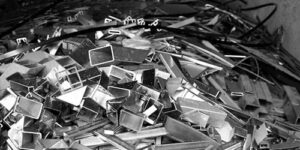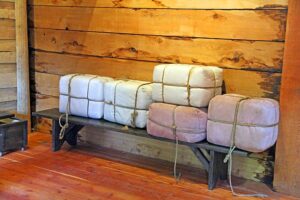Metal recycling is a thriving industry essential in reducing waste and conserving energy. This article looks closer at the journey of scrap metal Adelaide, highlighting the vital steps recycling service providers take to turn trash into treasure.
Before recycling any metal, it must be assessed for quality. This is done using a magnet to determine whether or not it is ferrous or non-ferrous.
Steel
 Steel, one of the most widely used metals in the world, is essential to construction and manufacturing. It’s also highly recyclable, and the global scrap metal recycling industry reduces up to 97% of mining wastes. By recycling steel, we save energy and money and reduce the ecological impact of digging raw materials from the ground.
Steel, one of the most widely used metals in the world, is essential to construction and manufacturing. It’s also highly recyclable, and the global scrap metal recycling industry reduces up to 97% of mining wastes. By recycling steel, we save energy and money and reduce the ecological impact of digging raw materials from the ground.
Steel scrap consists of discarded steel or steel-based products and is generally segregated by composition and size or ‘grade’ suitable for melting. Typical steel scrap is produced from end-of-life items like machinery, vehicles and appliances. It can be made through several processes, including sorting and cutting, shears and crushers.
Scrap steel prices fluctuate regularly according to global markets, local demand and supply. In addition, the cost of steel scrap is influenced by the type and condition of the material itself. Iron, for instance, is a critical component in numerous industrial applications, and scrap iron prices tend to mirror steel.
The international steel production industry requires specific standards and specifications for steel scrap. In general, these specifications set the maximum levels for metallic elements such as chromium, nickel, and molybdenum in different grades of steel scrap. Any delivery not meeting these requirements is deemed substandard and unacceptable. However, some exceptions may be made by mutual agreement between the supplier and purchaser based on knowledge of the actual nature and content of the steel scrap. These standards and specifications are usually set at an international, European, or national level. However, they are also negotiated between individual suppliers and smelters. This is because the quality of steel scrap is essential for smelters.
Iron
Recycling scrap metals is a global industry that stimulates economic growth and environmental sustainability. Recycling metals reduces waste, saves energy and provides an alternative to landfills. The recycling of metals also contributes to a reduction in greenhouse gas emissions. However, the prices of scrap metals can vary significantly from one location to another. To maximise returns from the sale of metals, individuals and businesses must clearly understand prevailing market prices.
Iron is a prevalent scrap metal Adelaide due to its wide-ranging industrial applications. It can be divided into two categories: ferrous and non-ferrous metals. Ferrous metals contain iron and are magnetic, while non-ferrous metals do not have iron and offer more excellent resistance to corrosion. Both types are often used in manufacturing and construction. The price of ferrous metals is generally higher than that of non-ferrous metals. However, the exact cost of iron scrap is determined by its quality, quantity, and form.
Steel is a critical element of construction and manufacturing. It is one of the most recycled metals on the planet, and its high demand makes it a staple in the economy. In addition to its many uses, recycled steel is a cost-effective alternative to virgin metals. Scrap steel prices are influenced by the type and condition of the material, with stainless steel typically commanding higher prices.
The recycling of metals is a growing industry, with more and more products being made from recycled materials. It has become common for items such as old cars and white goods to be recycled rather than thrown away. This is because recycled metals use just 5% of the energy required to make them from raw materials. The recycled metals are also easier to handle and can be turned into various products.
Aluminium
Aluminium is a popular material in construction and manufacturing thanks to its durability and lightweight properties. It is also corrosion-resistant and can be made into a variety of shapes. Typically, scrap aluminium prices in Adelaide fall within the AUD 0.65 – AUD 1.00 per kilogram range. However, specific rates may vary based on the type and condition of the metal.
Iron is another prevalent scrap metal due to its widespread industrial applications. Similarly to steel, scrap iron prices in Adelaide fall within the AUD 0.12 – AUD 0.24 per kilogram range. The exact price depends on the form of the iron scrap (cast iron, wrought iron) and its contamination level.
Copper is a valuable scrap metal, given its numerous applications in industries like electronics and construction. In Adelaide, the market for copper scrap is robust and offers a good return on investment. Scrap copper usually sells for AUD 7.00 – AUD 9.80 per kg, depending on its quality, quantity and form.
 When it comes to baling your crops, a good quality net wrap AU can protect your bales from moisture loss and make them more durable. This can help you save on transportation costs, as it will keep your hay intact during transport. Additionally, this will also increase the hay’s market value. This makes net wrap a great alternative to traditional twine.
When it comes to baling your crops, a good quality net wrap AU can protect your bales from moisture loss and make them more durable. This can help you save on transportation costs, as it will keep your hay intact during transport. Additionally, this will also increase the hay’s market value. This makes net wrap a great alternative to traditional twine.